Did you know the average ring size for women is between 6–7 (US), while men usually fall between 9–11?
Most women wear US sizes 6–7, with size 6 often the single most common. Most men wear US sizes 9–11, with sizes near 9–10 very frequent. These ranges are a useful starting point when guessing a ring size. Measure when possible, and use professional sizing or a reliable conversion chart to be sure. (“Ring size chart & average size notes,” https://www.bluenile.com/education/rings/find-your-ring-size)
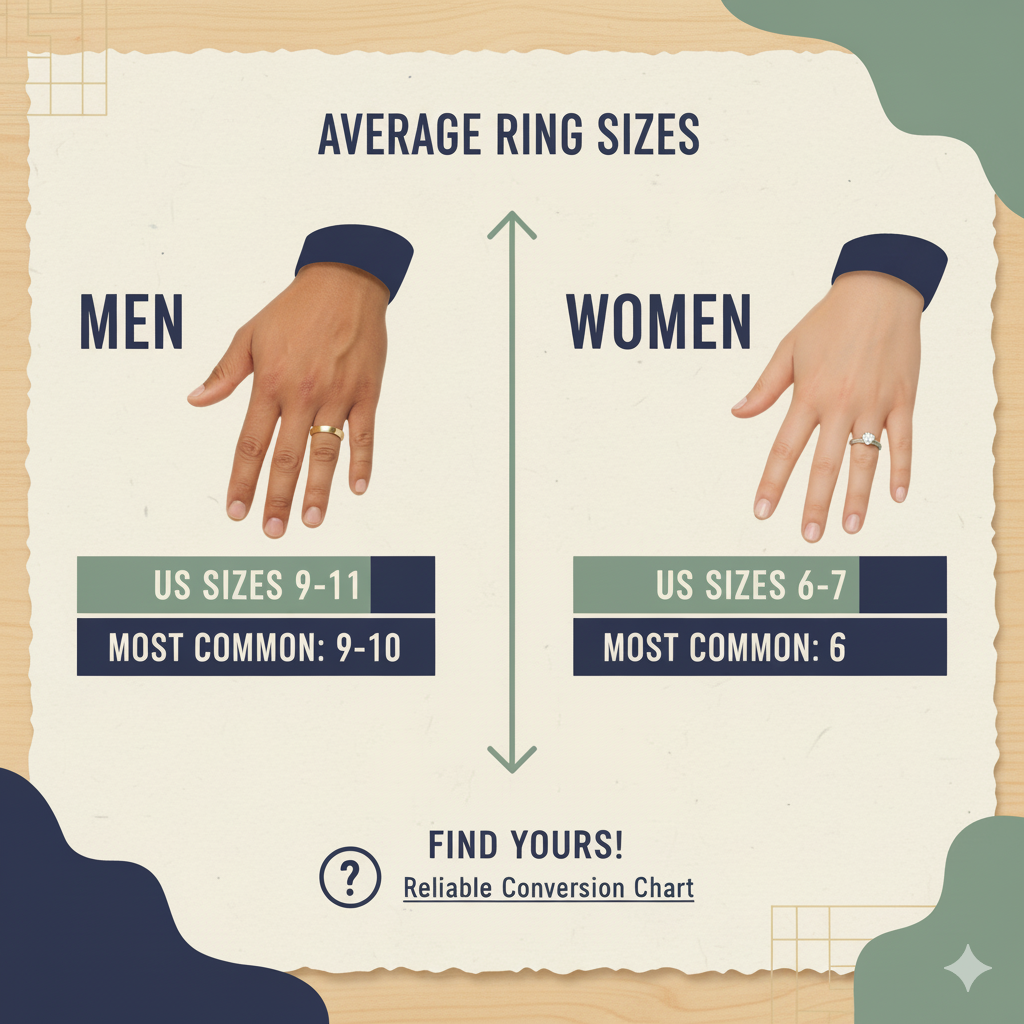
Why average ring size matters (quickly)
If you’re buying an engagement ring, wedding band, or a surprise gift, knowing average sizes helps you guess with confidence. A smart guess reduces the chance of expensive remakes or awkward exchanges. Yet averages are only starting points. People’s fingers vary widely by genetics, lifestyle, and season. Case studies from retailers confirm this spread. (“Ring Size Averages from 5,000 Orders,” https://www.myirishjeweler.com/blog/what-is-the-average-ring-size/)
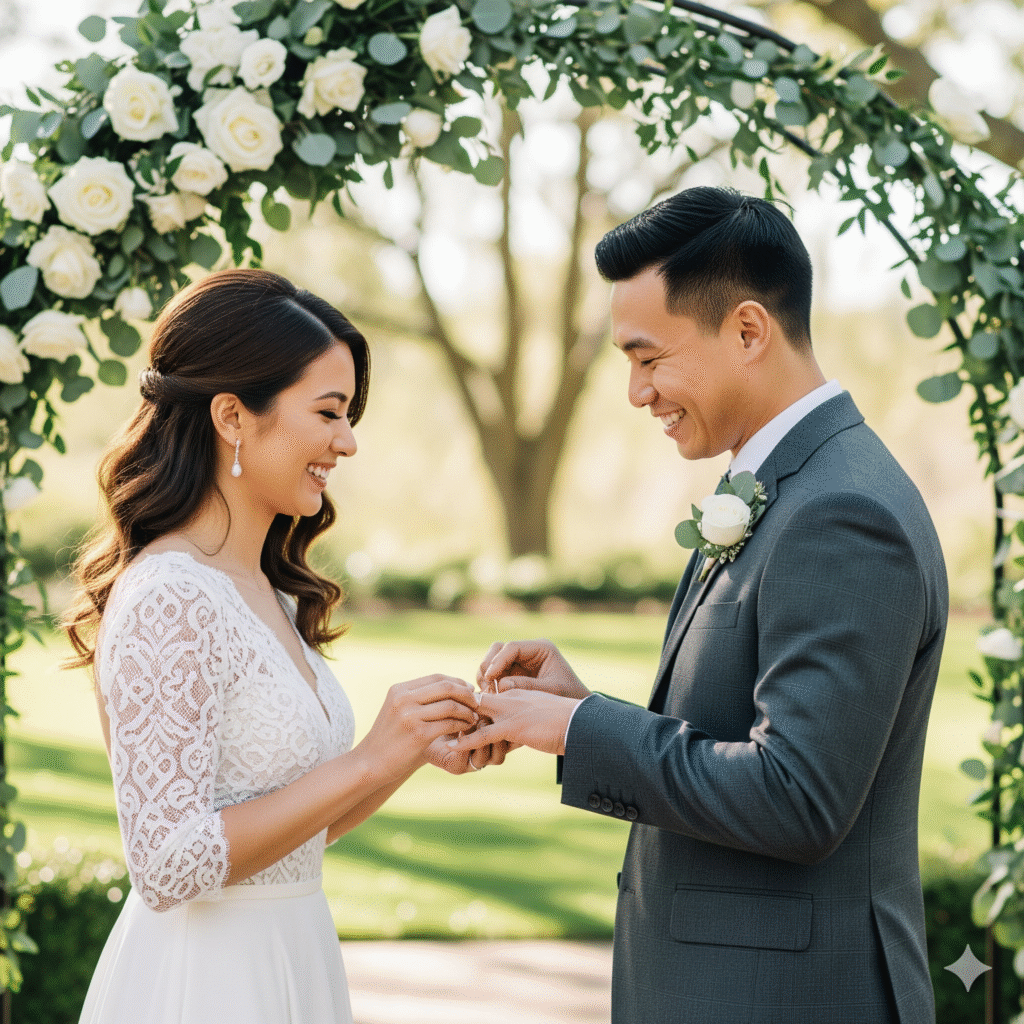
What “average ring size for women” really means
- The most common US sizes for women are 5–7, with a cluster around 6.
- Saying “average 6–7” means many women fall inside that band—but many do not. There are women with sizes from 3 up to 11.5 in real sales data.
Measure the Size When Possible
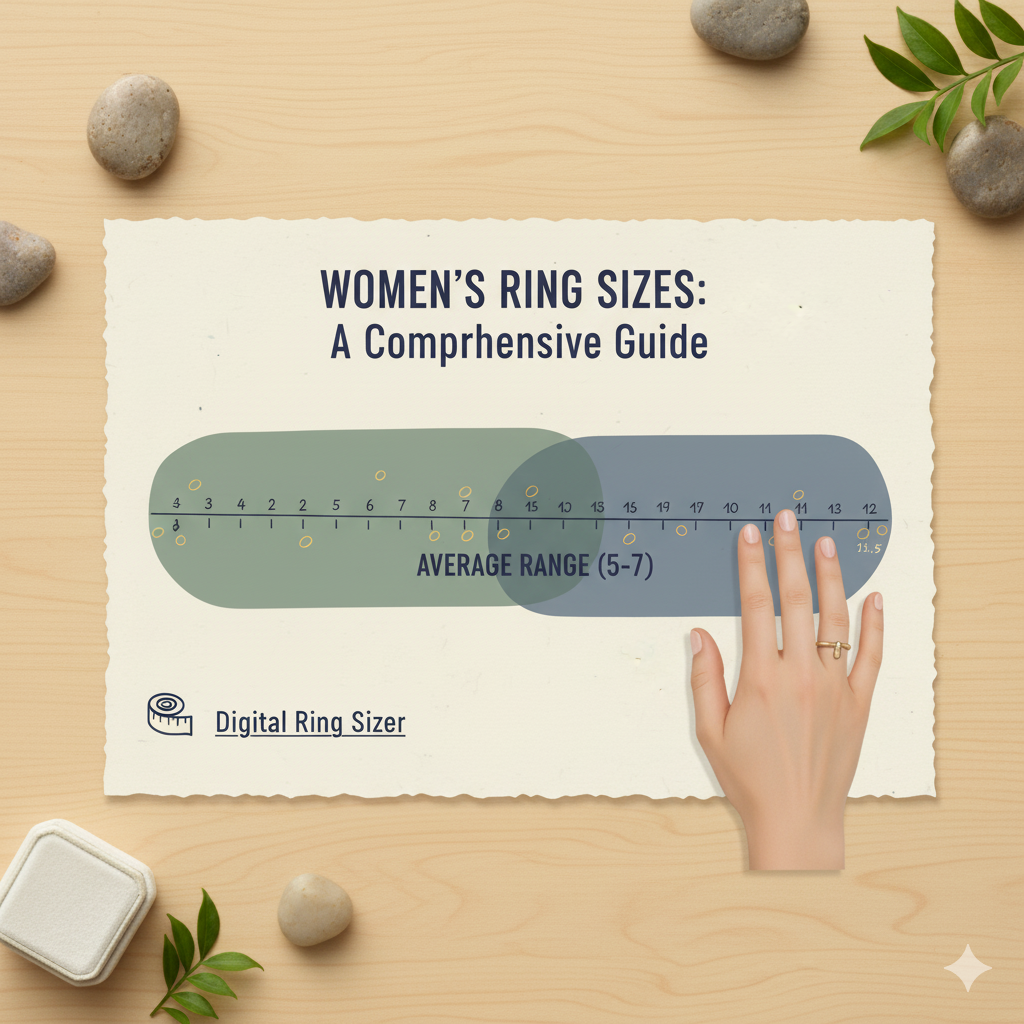
What “average ring size for men” really means
- Men typically fall between 9 and 11 in US sizing. Many sellers report size 9 or 10 as the single most frequent.
- Men’s sizes have a wider spread than women’s. Wedding-band styles, wide bands, and occupational factors shift the fitting.
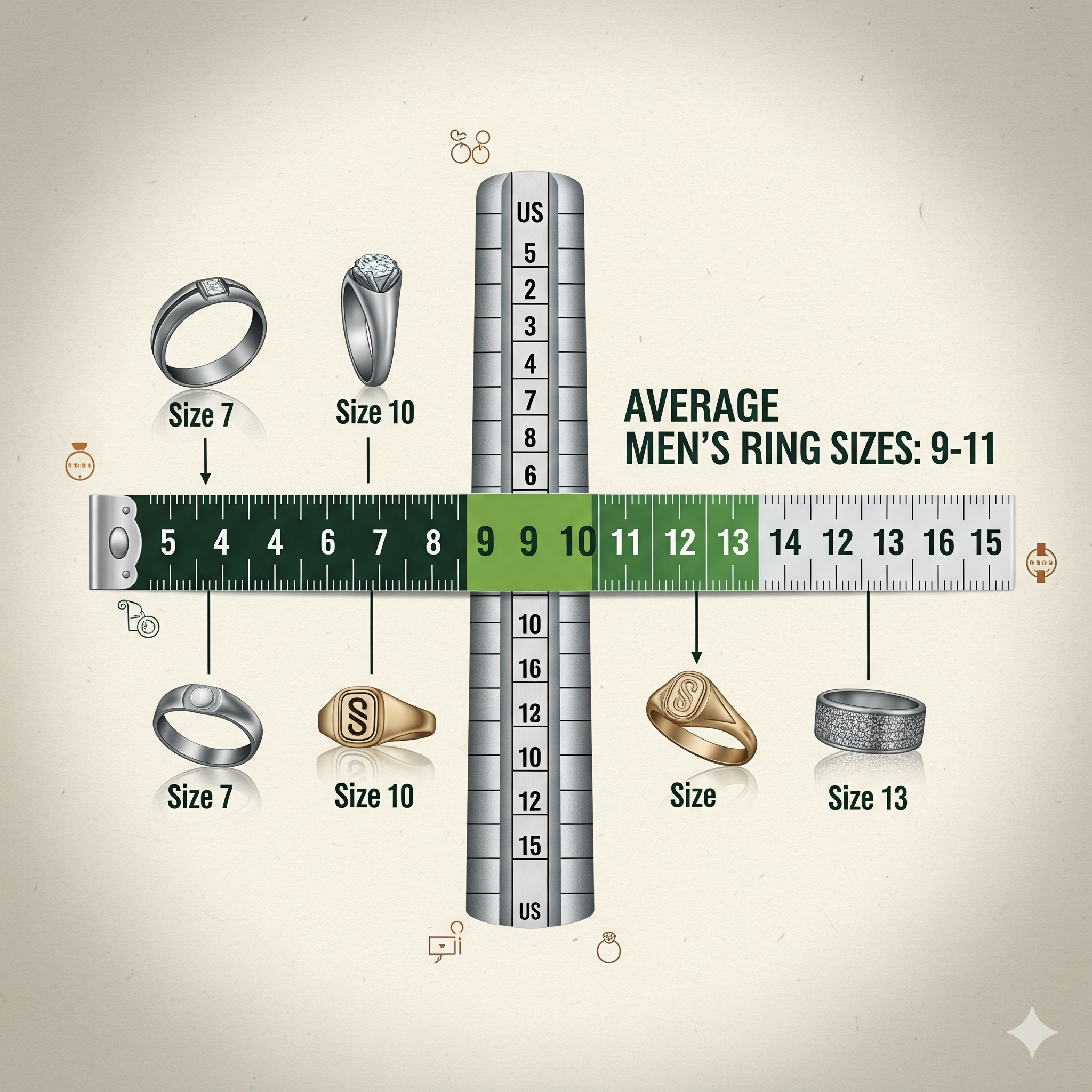
Quick ring size conversion (US ↔ UK ↔ circumference)
Always check the vendor’s chart before ordering. Conversion tables differ slightly by manufacturer. Use actual millimetres when possible.
For satisfactory results you can use our Ring Size International Chart
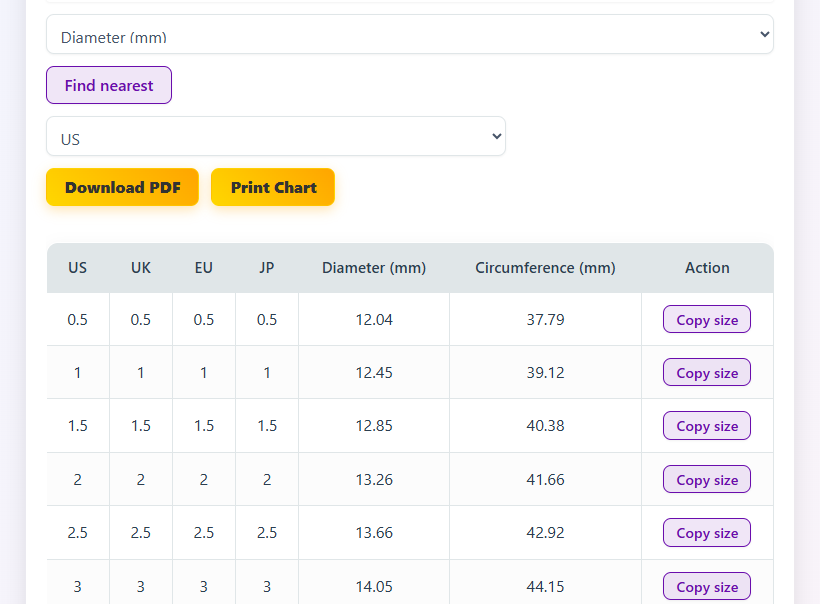
How to measure ring size accurately (home + pro methods)
Best practice: measure in the evening when fingers are a stable, typical size. Temperature affects fit—cold shrinks fingers, heat swells them. Measure multiple times on different days for accuracy.

Factors that change ring size (and how much they matter)
- Time of day
- Temperature
- Dominant hand
- Weight changes & pregnancy
- Occupation/lifestyle
- Ring width
Engagement and wedding rings — special sizing rules
- Engagement rings: usually sized for left hand.
- Band style matters.
- Resizing policies differ by jeweler.
Common myths — busted
- Predicting size by height/weight is unreliable.
- Shoe size ≠ ring size.
Quick Checklist Before You Buy
Before purchasing, make sure you’ve considered these essential steps. Skipping them often leads to resizing hassles later.
- Measure your finger at the right time of day (evening is best).
- Double-check with a professional jeweler when possible.
- Think about the band width — wider bands fit tighter.
- Account for climate and lifestyle factors.
- Always check if the retailer offers free resizing.
If you need help converting sizes across regions, use a US ring size chart to avoid mistakes when ordering internationally.
Short Case Study: Real-World Data
Data confirms what jewelers see every day: most women fall between sizes 6–7 (US), and men between 9–11 (US).
In fact, “nearly half of women’s ring sizes are between 6 and 8, with size 7 being the most common” (GIA). Similarly, US jewellers report that men’s most popular size is 10, with the majority falling in the 9–11 range.
How Ring Sizes Are Measured Around the World
Ring sizes can be confusing because different countries use different systems:
- US & Canada: Numbers (3–16)
- UK, Ireland, Australia: Letters (A–Z)
- Europe: Millimeters based on circumference
Use our Ring Size International Chart to quickly convert between systems.
Frequently Asked Questions
What is the most common women’s ring size?
The average women’s ring size is US 6–7, or UK L–N.
What is the most common men’s ring size?
Most men fall between US 9–11, with size 10 the most popular.
an I find my ring size online?
Yes. Try our Digital Ring Sizer for an easy at-home measurement.
What if I’m between two sizes?
Choose the larger size. It’s easier to resize down than up.
Do wide bands require a larger size?
Yes. Wider rings can feel tighter, so go up half a size for comfort.
Final Thoughts — Balancing Averages and Accuracy
Averages are a good starting point: women 6–7 (US), men 9–11 (US). But averages don’t replace accurate measurement.
👉 Always measure with a ring size calculator guide, ask a jeweller, or choose a retailer with a resizing policy.